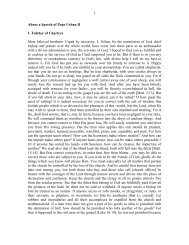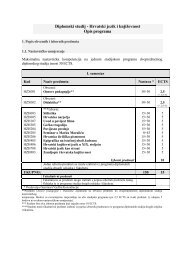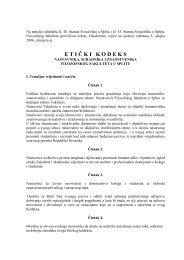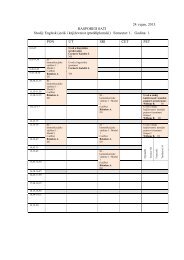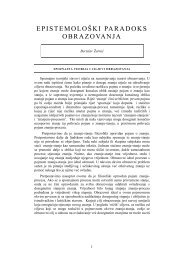Understanding Human Communication
Understanding Human Communication
Understanding Human Communication
Create successful ePaper yourself
Turn your PDF publications into a flip-book with our unique Google optimized e-Paper software.
304 PART THREE COMMUNICATION IN GROUPS<br />
CULTURAL IDIOM<br />
sizing up: assessing<br />
After members understand the problem and become acquainted, a successful<br />
group enters the conflict stage. During this stage,members take strong positions<br />
and defend them against those who oppose their viewpoint. Coalitions are<br />
likely to form, and the discussion may become polarized.The conflict needn’t<br />
be personal: It can focus on the issues at hand while preserving the members’<br />
respect for one another. Even when the climate does grow contentious, conflict<br />
seems to be a necessary stage in group development.The give-and-take of discussion<br />
tests the quality of ideas, and weaker ones may suffer a well-deserved<br />
death here. 17<br />
After a period of conflict,effective groups move to an emergence stage. One<br />
idea might emerge as the best one, or the group might combine the best parts<br />
of several plans into a new solution. As they approach consensus, members<br />
back off from their dogmatic positions. Statements become more tentative<br />
again: “I guess that’s a pretty good idea,”“I can see why you think that way.”<br />
Finally, an effective group reaches the reinforcement stage. At this point<br />
not only do members accept the group’s decision, but also they endorse it.<br />
Whereas members used evidence to back up differing positions in the conflict<br />
stage,now they find evidence that will support the decision.Even if members disagree<br />
with the outcome, they do not voice their concerns.There is an unspoken<br />
drive toward consensus and harmony.<br />
Ongoing groups can expect to move through this four-stage process with each<br />
new issue, so that their interaction takes on a cyclic pattern (see Figure 9–1). In<br />
fact, a group who deals with several issues at once might find itself in a different<br />
stage for each problem.In one series of studies,slightly less than 50 percent of the<br />
problem-solving groups examined followed this pattern. 18 The same research<br />
Orientation Conflict Decision emergence<br />
Decision emergence<br />
Conflict<br />
Reinforcement<br />
Reinforcement<br />
Reinforcement<br />
Decision emergence<br />
Orientation<br />
Reinforcement<br />
Orientation<br />
Orientation<br />
Conflict<br />
Orientation<br />
Figure 9-1 Cyclical Stages in an Ongoing Problem-Solving Group. Source: From John K. Brilhart,<br />
Gloria J. Galanes, and Katherine Adams, Effective Group Discussion, 10th ed. (New York: McGraw-Hill,<br />
2001), p. 289.<br />
Conflict<br />
Decision emergence



